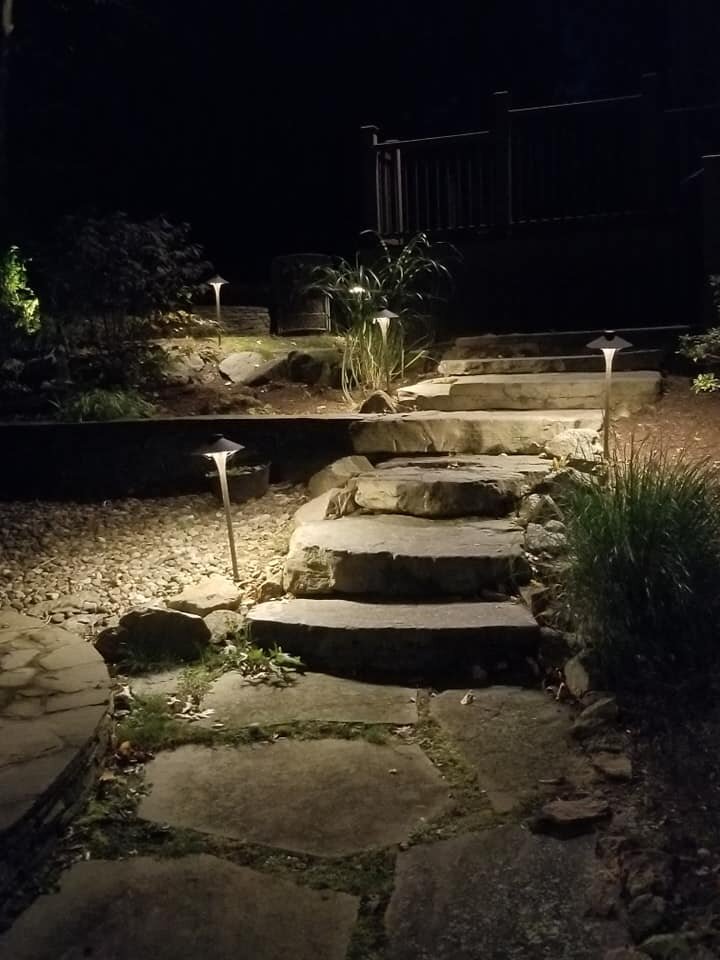Your clients want the absolute best for their home and landscape lighting can make all the difference in a few key areas. Apart from appearing inviting and entertaining to guests, their landscapes must also be safe and secure. The right lighting choices can become the finishing touches on your clients’ landscapes. Here are 3 ways landscape lighting can improve your landscape design in Westchester County, NY.
Related: OUTDOOR LIGHTING TIPS TO IMPROVE YOUR SAFETY OUTDOORS IN SOMERS AND BRIARCLIFF MANOR, NY AREAS
Clearly Define Spaces
Conversations around space usage should be detailed with your clients’ needs and desires. Lighting for different purposes is crucial in defining an outdoor space. Illuminating the outside of a home can provide security by showing not only the house number from the street, but also the entryways. This is the first step to creating a safe atmosphere. Add low-lying path lights to the driveway and any walkways for safe passage. Place spotlights at ground level and point them upward to create visual interest and avoid dark areas.
Different lighting techniques address the differences between task lighting and ambient lighting. The biggest noticeable difference between the two is brightness. Task lighting should illuminate something like the countertop of an outdoor kitchen. Ambient lighting should provide a gentle glow around gathering areas, lighting a space indirectly rather than the old-school direct glare of a floodlight. In areas of an outdoor space that aren’t heavily used, placing a light that highlights a focal point can also eliminate overly dark areas.
Strategize Focus and Technique
When performing a site visit to your clients’ backyard, notice a few unique areas of the yard - a lone tree or a cluster of shrubs. Look for an exposed section of a retaining wall or a water feature. By highlighting a few of these features, you can show the texture of a landscape that would otherwise be obscured by the darkness of night. This can all be done while avoiding flooding your clients’ yard with garish white light from one or two sources.
Use the spotlighting technique to focus a beam of light to one location, cementing that image as a key point of an outdoor space. This could be a gnarled burl of a tree or the top of a waterfall. Silhouetting will cast an intentional shadow on a flat vertical surface that increases dramatic visuals. For a dramatic backyard center-piece like a sculpture or a notable tree, point several spotlights to create a cross-lighting effect that will add a more dimensional look. Use several small lights near the ground to create diffused lighting underneath the plants in a garden.
If there are any water features in your clients’ outdoor living space, highlight them at night. Use any of the aforementioned techniques to give them the best nighttime experience they can get.
Economize Light Sources
In order to minimize your clients’ electricity usage for both economic and environmental reasons, carefully choose the type of bulb or use LED lights. Consider variances such as soft vs bright, color temperature, and whether they provide physical heat that could damage some plants. Use automatic timers or light sensors to avoid mistakes like leaving the lights on for the daytime. Add remote switches as an option so your client may choose to turn the lights off if necessary. Making conscious choices about the economics of your light sources will set your service apart.
Related: 5 LANDSCAPE DESIGN IDEAS THAT SHOWCASE THE VERSATILITY OF OUTDOOR LIGHTING IN WESTCHESTER COUNTY, NY


